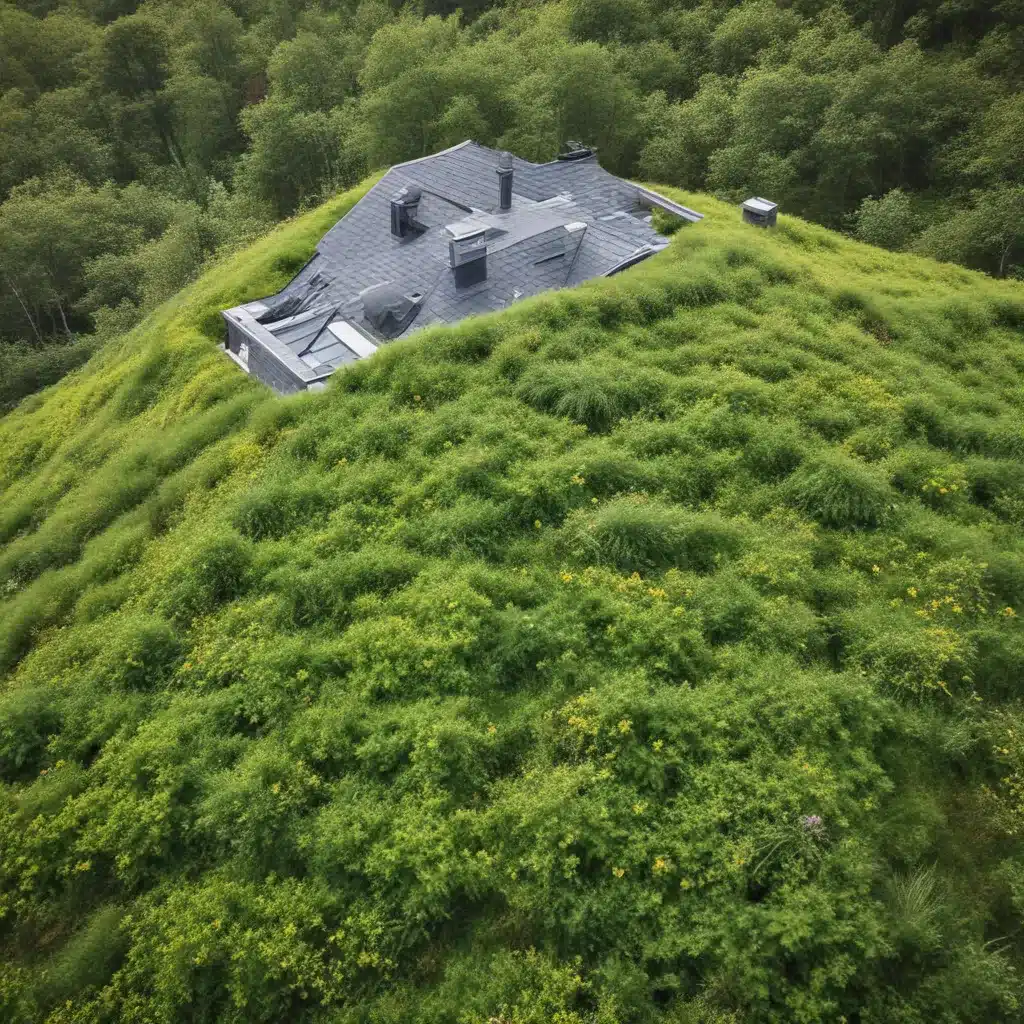
Understanding the Advantages of Green Roofs
In today’s environmentally conscious world, homeowners are increasingly seeking sustainable and eco-friendly solutions for their homes. One such innovative approach that is gaining widespread popularity is the use of green roofing systems. As a seasoned roofing professional, I’m excited to dive into the numerous benefits that green roofs can offer your home.
Green roofs, also known as “vegetated roofs” or “living roofs,” are roofing systems that incorporate a layer of vegetation, soil, and other growing media over a traditional roof. These innovative systems not only enhance the aesthetic appeal of your home but also provide a multitude of environmental, economic, and social advantages.
Mitigating the Urban Heat Island Effect
One of the primary benefits of green roofs is their ability to combat the urban heat island effect. This phenomenon occurs when densely populated areas, with an abundance of heat-absorbing surfaces like asphalt and concrete, experience significantly higher temperatures compared to surrounding rural or suburban areas. By incorporating lush greenery on your roof, you can help reduce the heat island effect, as the vegetation absorbs and reflects solar radiation, keeping your home and the surrounding environment cooler.
Improving Energy Efficiency
Green roofs have been shown to significantly improve the energy efficiency of buildings. The insulating properties of the soil and vegetation can reduce your home’s heating and cooling needs, leading to substantial energy savings. Studies have reported energy cost reductions of up to 0.7% compared to traditional roofing materials. This not only benefits your wallet but also contributes to a more sustainable future by reducing your carbon footprint.
Enhancing Stormwater Management
Another major advantage of green roofs is their ability to manage stormwater effectively. The soil and vegetation on a green roof can absorb and slow down the flow of rainwater, reducing the burden on municipal drainage systems and mitigating the risk of flooding. This is particularly beneficial in areas with high precipitation or limited stormwater infrastructure. By retaining and filtering rainwater, green roofs can also help improve water quality and reduce the impact of pollutants on local waterways.
Improving Air Quality and Reducing Pollution
Green roofs don’t just look beautiful, they also play a crucial role in improving air quality. The plants on a green roof can absorb and filter air pollutants, such as particulate matter, carbon dioxide, and various airborne contaminants. This not only enhances the air quality around your home but also contributes to the overall well-being of your local community.
Creating Habitat and Promoting Biodiversity
Surprisingly, green roofs can also serve as valuable habitats for a variety of plant and animal species. By providing a green oasis in an urban setting, these roofs can support the growth of native flora and fauna, attracting pollinators like bees and butterflies. This helps to preserve and enhance local biodiversity, contributing to a more balanced and resilient ecosystem.
Increasing Property Value and Aesthetic Appeal
In addition to the environmental benefits, green roofs can also enhance the overall aesthetic appeal of your home, potentially increasing its market value. The lush, vibrant greenery and the integration of natural elements can create a visually striking and modern look that appeals to many homebuyers. This can be a significant advantage if you ever decide to sell your property.
Choosing the Right Green Roofing System
When it comes to green roofing systems, there are two primary types to consider: extensive and intensive. Extensive green roofs are typically lighter, with a thinner soil layer and a more limited selection of low-maintenance plants. Intensive green roofs, on the other hand, feature deeper soil profiles and can support a wider variety of plant species, including small trees and shrubs. The choice between these two options will depend on factors such as the structural integrity of your roof, your maintenance preferences, and your desired level of aesthetic appeal.
It’s important to consult with a reputable roofing contractor, like those at Roofers in Northampton, to ensure that your green roof is properly designed, installed, and maintained to maximize its benefits and longevity.
Navigating the Costs and Maintenance
While the initial investment in a green roof may be higher than traditional roofing options, the long-term benefits often outweigh the upfront costs. When factoring in energy savings, reduced stormwater management fees, and the potential increase in property value, green roofs can provide a strong return on investment over their lifespan.
Maintenance requirements for green roofs vary based on the type of system. Extensive green roofs generally require less maintenance, with occasional weeding, watering, and fertilization. Intensive green roofs, with their deeper soil profiles and more diverse plantings, may require more frequent attention to maintain their aesthetic appeal and functionality.
Conclusion: A Sustainable and Resilient Solution
As a roofing professional, I wholeheartedly recommend considering a green roofing system for your home. The multitude of environmental, economic, and social benefits make it a truly compelling option for homeowners who are committed to sustainable living and want to create a healthier, more resilient home. By investing in a green roof, you can not only enhance the curb appeal of your property but also contribute to the overall well-being of your local community and the planet.
If you’re ready to explore the possibilities of green roofing, I encourage you to reach out to the experienced team at Roofers in Northampton. They can provide expert guidance, tailored recommendations, and reliable installation services to help you unlock the full potential of a green roof for your home.

